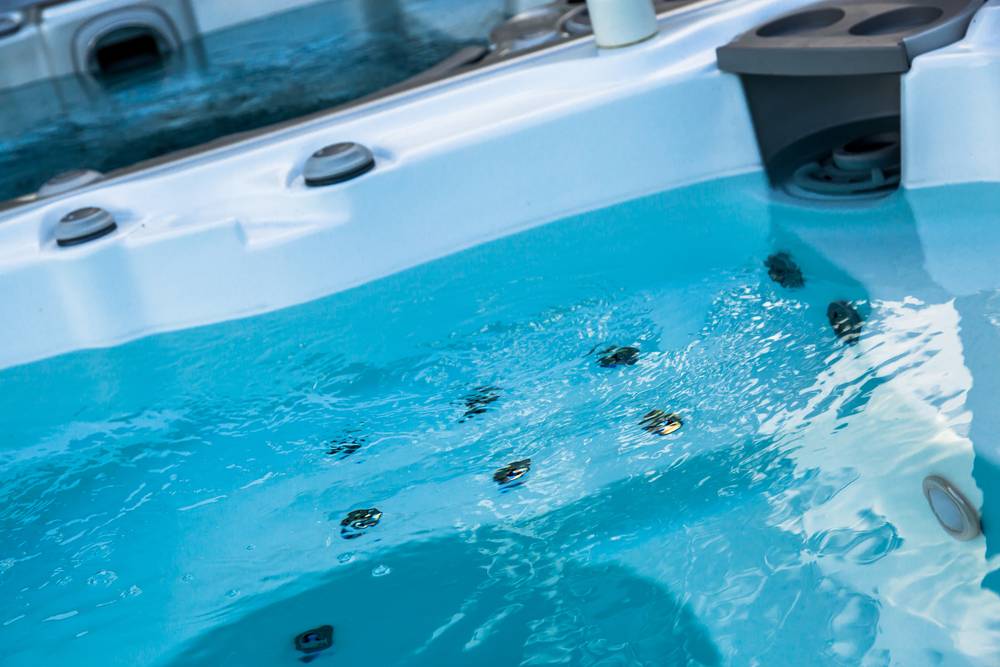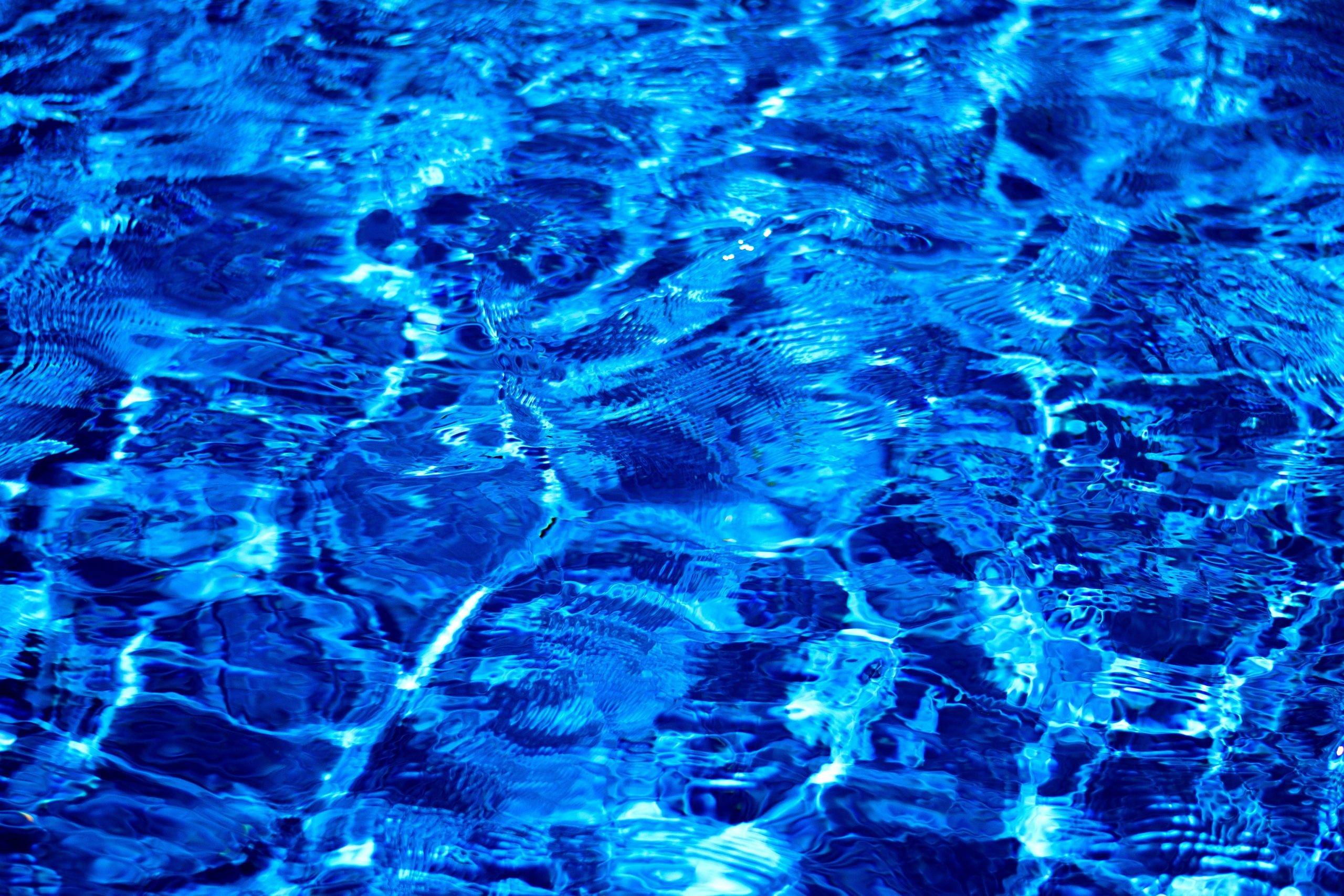I'm on the way home to start balancing the water in our new hotub ( installed on Tuesday). Read the sticky thread on how to go about it and determined I need Dichlor and bleach to get started. I stopped at the pool store and asked for Dichlor and non chlorine shock and this is what they gave me. I already have pool bleach at the house. Just wanted to confirm that these are the correct items.
Is this Dichlor? Is this Potassium Monopersulfate (MSP)?
- Thread starter wmathurin
- Start date
You are using an out of date browser. It may not display this or other websites correctly.
You should upgrade or use an alternative browser.
You should upgrade or use an alternative browser.
- Jun 24, 2021
- 15,928
- Pool Size
- 29000
- Surface
- Vinyl
- Chlorine
- Salt Water Generator
- SWG Type
- CircuPool RJ-60 Plus
Left is MPS. Right is Dichlor.
You don't need MPS and I wouldn't use it.
MPS is an oxidizer and not a sanitizer.
Chlorine is both an oxidizer AND a sanitizer.
MPS breaksdown and adds sulfates to the water
Chlorine breaks down and adds chloride to the water
Sulfates, at high enough levels, cause crevice corrosion
Chloride, at SUPER HIGH levels, increases pitting corrosion
Most tub heaters are made of cheap steel or, if lucky, Incoloy (a high Cr/Ni content stainless steel)
Some people have skin allergies towards MPS
Almost no one has allergies to chlorine (those that think they do are often mistaken)
Chlorine creates chloramines which can be smelly and irritating
MPS typically only creates oxygen and nitrogen and it's oxides.
You absolutely must have a sanitizer in the water, that is non-negotiable. Oxidizers are important for destroying bather waste.
If chlorine does BOTH jobs, then why do you need MPS?
The sticky is a very old thread...we've updated our understanding here:

 www.troublefreepool.com
www.troublefreepool.com
You don't need MPS and I wouldn't use it.
MPS is an oxidizer and not a sanitizer.
Chlorine is both an oxidizer AND a sanitizer.
MPS breaksdown and adds sulfates to the water
Chlorine breaks down and adds chloride to the water
Sulfates, at high enough levels, cause crevice corrosion
Chloride, at SUPER HIGH levels, increases pitting corrosion
Most tub heaters are made of cheap steel or, if lucky, Incoloy (a high Cr/Ni content stainless steel)
Some people have skin allergies towards MPS
Almost no one has allergies to chlorine (those that think they do are often mistaken)
Chlorine creates chloramines which can be smelly and irritating
MPS typically only creates oxygen and nitrogen and it's oxides.
You absolutely must have a sanitizer in the water, that is non-negotiable. Oxidizers are important for destroying bather waste.
If chlorine does BOTH jobs, then why do you need MPS?
The sticky is a very old thread...we've updated our understanding here:

Spa & Hot Tub Maintenance A Basic Guide
Hot Tub Maintenance can be done easy with a few tricks. Hot tub chemicals, rashes, and schedules are all covered in this easy to grasp article.
- Jun 24, 2021
- 15,928
- Pool Size
- 29000
- Surface
- Vinyl
- Chlorine
- Salt Water Generator
- SWG Type
- CircuPool RJ-60 Plus
You can also use the WIKI...both have most current information...
 www.troublefreepool.com
www.troublefreepool.com
Hot Tub Basics - Further Reading
Ok, will return the MPS. I just read the updated article you sent.
I think I am ready to start the Dichlor/Bleach method now.
One question about pool math, I already have my pool in the app, do I just add another pool and put it as fiberglass and 318 gallons to replicate the hot tub?
I think I am ready to start the Dichlor/Bleach method now.
One question about pool math, I already have my pool in the app, do I just add another pool and put it as fiberglass and 318 gallons to replicate the hot tub?
- Jun 24, 2021
- 15,928
- Pool Size
- 29000
- Surface
- Vinyl
- Chlorine
- Salt Water Generator
- SWG Type
- CircuPool RJ-60 Plus
VinnyinNJ
Bronze Supporter
- Jul 20, 2022
- 1,050
- Pool Size
- 13500
- Surface
- Vinyl
- Chlorine
- Salt Water Generator
- SWG Type
- Hayward Turbo Cell (T-CELL-5)
Just use dichlor, keep your free chlorine at the recommended levels. Once you get to 30 PPM of stabilizer which is ~30 PPM dichlor total added, switch to bleach/ liquid chlorine. Just a FYI, I don't know if anything has changed but years ago liquid chlorine/bleach would void your warranty.
If for some reason you feel the need to shock then use a slam level of chlorine. MPS will give you false readings of combined chlorine.
If for some reason you feel the need to shock then use a slam level of chlorine. MPS will give you false readings of combined chlorine.
Two more questions if I may:
1. How do I measure the Dichlor granules? By weight? What is 1ppm equal to in a measurement?
2. When can we start using the hot tub? Once I add my first batch of Dichlor and get some sanitation going and the chlorine ppm is testing between 2 and 6, is that okay? Do I need to balance out pH and TA first also?...My wife and kids are about to revolt
1. How do I measure the Dichlor granules? By weight? What is 1ppm equal to in a measurement?
2. When can we start using the hot tub? Once I add my first batch of Dichlor and get some sanitation going and the chlorine ppm is testing between 2 and 6, is that okay? Do I need to balance out pH and TA first also?...My wife and kids are about to revolt
- Jun 24, 2021
- 15,928
- Pool Size
- 29000
- Surface
- Vinyl
- Chlorine
- Salt Water Generator
- SWG Type
- CircuPool RJ-60 Plus
By weight. Use a little electronic food scale.
Use pool math for amounts to add. With the dichlor to bleach method, you only add what you need for FC, CYA will come up over time...
Any pH between 7 and up to 8 is fine. If higher then lower.
Should be fine to soak.
Use pool math for amounts to add. With the dichlor to bleach method, you only add what you need for FC, CYA will come up over time...
Any pH between 7 and up to 8 is fine. If higher then lower.
Should be fine to soak.
VinnyinNJ
Bronze Supporter
- Jul 20, 2022
- 1,050
- Pool Size
- 13500
- Surface
- Vinyl
- Chlorine
- Salt Water Generator
- SWG Type
- Hayward Turbo Cell (T-CELL-5)
I did things differently then weighing, I added 1 teaspoon full at a time until I found what 3 PPM (or more) equaled to. Once known, its just a matter of adding the appropriate amount. For larger measurements, i would use a tablespoon.
You can use the tub once you have the right amount of chlorine in it.
One thing to know. You're 3 PPM minimum is measured 20 minutes after you put the chlorine in. Run all the jets when dosing the tub to get the chlorine in every nook and cranny.
You can use the tub once you have the right amount of chlorine in it.
One thing to know. You're 3 PPM minimum is measured 20 minutes after you put the chlorine in. Run all the jets when dosing the tub to get the chlorine in every nook and cranny.
JoeSelf
Gold Supporter
1 tablespoon equal .5 oz. Thanks to @Mdragger88 for this.
This gives me 5 FC & 5 CYA in my tub. 400 gallons.
This gives me 5 FC & 5 CYA in my tub. 400 gallons.
For granules, the bulk density depends on how compacted the granules are.
Assuming a 100% packing, you get 1 oz volume = 2 oz weight.
For a loose packing, you get about 1 oz volume = 1 ounce weight.
1 oz by weight = 0.94 oz by volume.
1 oz by weight = 27.8 ml.
1 oz by weight = 1.88 Tablespoons.
BULK DENSITY: 56-60 lbs/ft3 (loose)
58 lb/cuft = 928 ounce weight /958 ounce volume
1 oz. by weight = 0.97 oz. by volume (Bulk Density).
Relative Density/Specific Gravity 1.95 g/mL @ 25 °C. (water=1):
68.78 ounces (weight) = 33.81 fl oz (fluid ounces).
1 oz weight = 0.5 oz volume.
The density of water is approximately 1.04 ounces (weight) per fluid ounce (volume).

Assuming a 100% packing, you get 1 oz volume = 2 oz weight.
For a loose packing, you get about 1 oz volume = 1 ounce weight.
1 oz by weight = 0.94 oz by volume.
1 oz by weight = 27.8 ml.
1 oz by weight = 1.88 Tablespoons.
BULK DENSITY: 56-60 lbs/ft3 (loose)
58 lb/cuft = 928 ounce weight /958 ounce volume
1 oz. by weight = 0.97 oz. by volume (Bulk Density).
Relative Density/Specific Gravity 1.95 g/mL @ 25 °C. (water=1):
68.78 ounces (weight) = 33.81 fl oz (fluid ounces).
1 oz weight = 0.5 oz volume.
The density of water is approximately 1.04 ounces (weight) per fluid ounce (volume).

Last edited:
RonRomo
New member
I use Leisure Time "Spa 56" Dichlor granules (99% active Dichlor) and have measured the density on several occasions. I just remeasured and confirmed the container of Spa 56 I am using is 1.35 oz. (weight) = 1 oz. (fluid). The container I have was purchased in July, 2023. I don't know if the various manufacturers of Dichlor have different granule particle sizes that can impact the density, so, you may consider measuring your own Dichlor to see how it compares.
TFP is a registered 501(c)3 non-profit that is maintained by user donations.
The people who answer questions are volunteers.
If you find the site to be a good resource, please consider making a donation to help support the site.
Thanks.

 www.troublefreepool.com
www.troublefreepool.com
The people who answer questions are volunteers.
If you find the site to be a good resource, please consider making a donation to help support the site.
Thanks.

Become a TFP Supporter
Help Support TFP Trouble Free Pool is run by a dedicated group of volunteers that … Read more…


